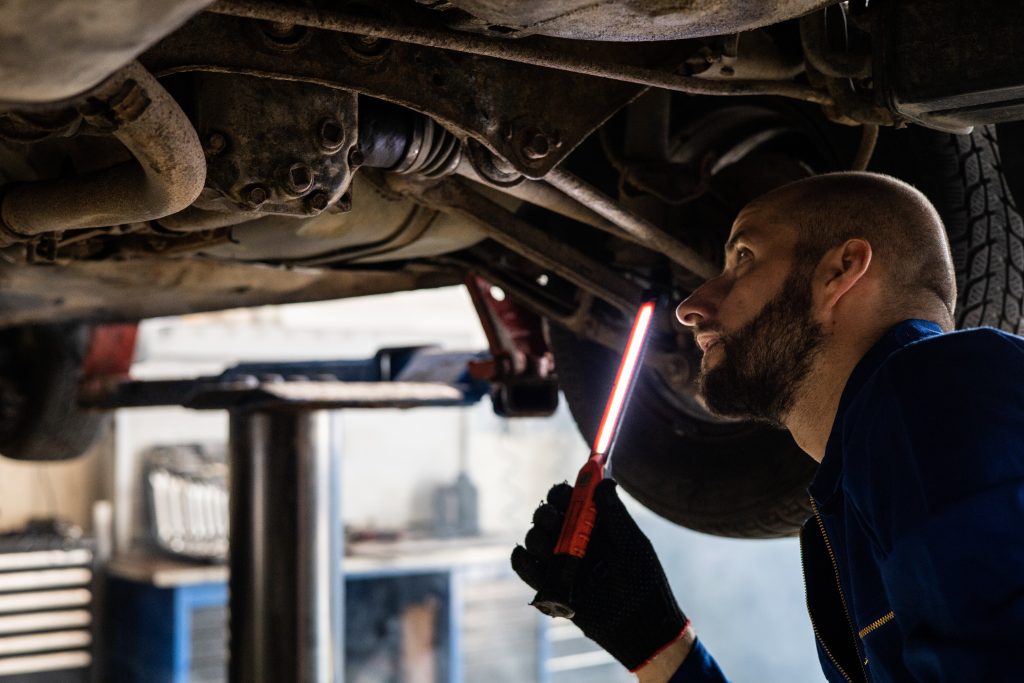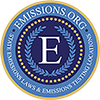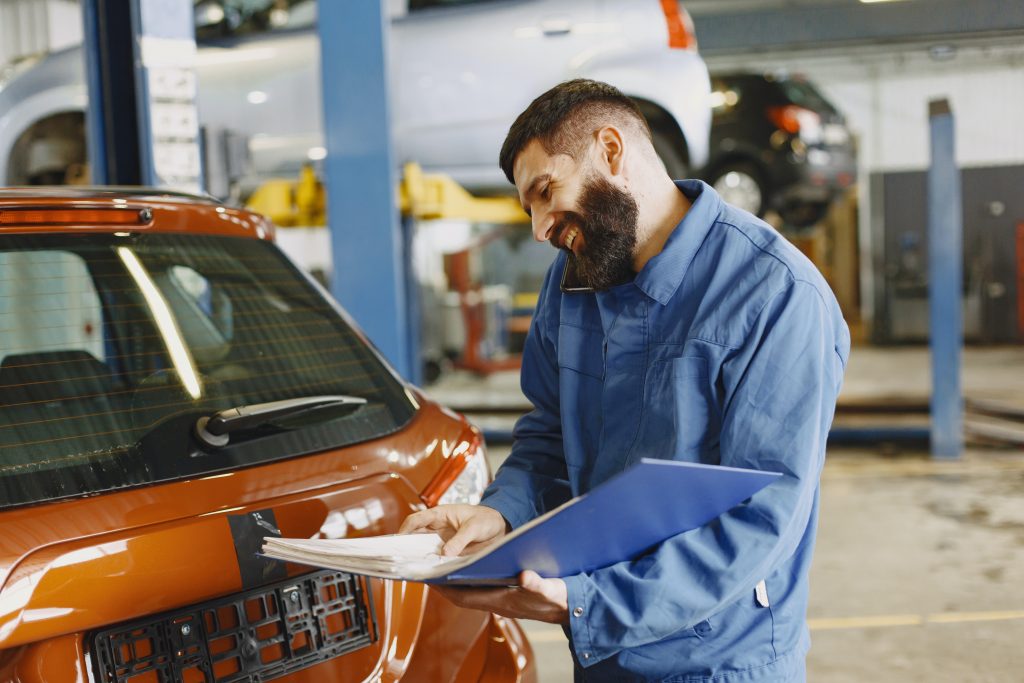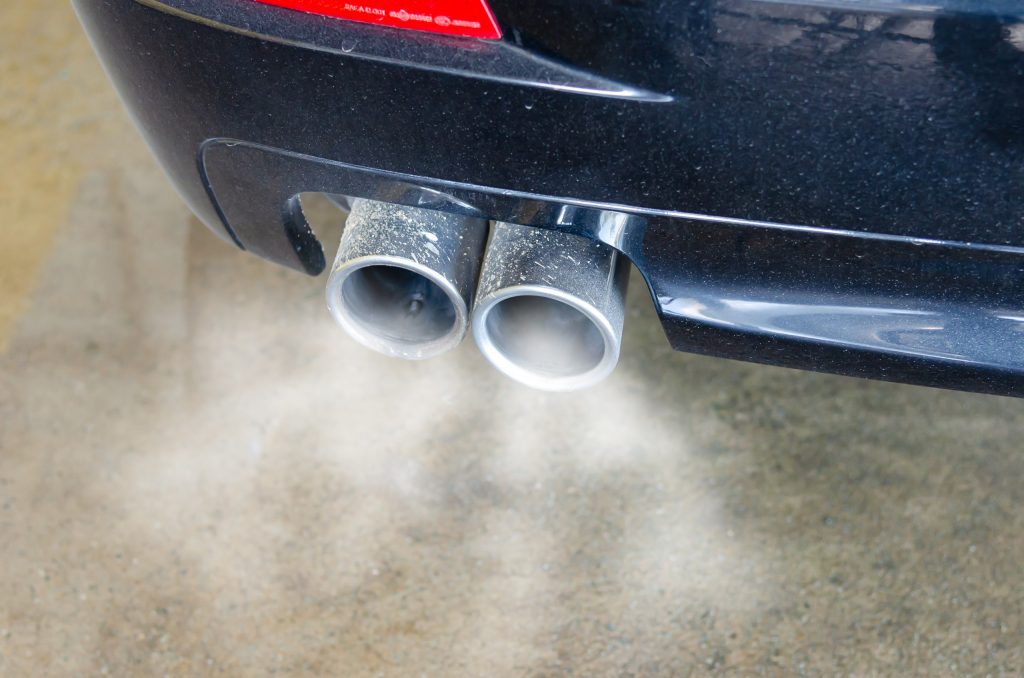Car owners often underestimate the importance of getting their car inspected regularly, only realizing the need when a problem becomes too evident or costly to ignore.
To avoid expensive repairs and ensure your safety on the road, it’s crucial to be vigilant and recognize the signs that indicate your car should be inspected.
In this comprehensive guide, we’ll delve into these signs and what they mean for your vehicle’s health.
From strange noises to warning lights, we’ll cover it all, offering valuable insights to help you make informed decisions about your car’s maintenance.

Strange Noises
Unusual sounds like grinding, squealing, or clunking can be a telltale sign that something’s amiss in your car’s components. Don’t dismiss them; they could indicate problems with your brakes, suspension, or engine.
- Grinding While Braking: This noise may indicate worn brake pads, risking brake damage or failure if unaddressed.
- Squealing During Acceleration: High-pitched squeals signal a loose/worn serpentine belt or engine accessory drive issues.
- Clunking Over Bumps: Suggests suspension trouble like worn shocks or loose parts.
- Rattling Under the Hood: Points to exhaust, heat shield, or engine issues.
- Hissing/Whistling Dashboard: Indicates a vacuum leak, affecting engine performance and fuel efficiency.
- Clicking When Turning: From CV joint or front-wheel-drive axle problems.
Warning Lights
Modern cars are equipped with dashboard warning lights to alert you when something needs attention. Ignoring these lights and not getting your car inspected as soon as possible can lead to more significant issues down the road, both for your car and your wallet.
- Check Engine Light: Signals various engine issues, from loose gas caps to severe problems. Prompt diagnosis is crucial.
- Oil Pressure Warning: Alerts low oil pressure, risking engine damage if ignored.
- Battery Warning: Suggests charging system problems, risking a stranded situation.
- Brake System Warning: Compromised brakes impact safety; address promptly.
- Tire Pressure Warning: Prevents blowouts and boosts fuel efficiency.
- ABS Warning: Affects braking safety, especially in adverse conditions.
- Airbag Warning: Crucial for passenger safety; ignoring it poses potential risks.
- Coolant Temperature Warning: Overheating may harm the engine; pull over if it lights up.
Reduced Gas Mileage
A sudden drop in fuel efficiency is often a sign that your car’s engine is not operating efficiently. This can result from various issues, including clogged air filters or fuel system problems.
- Sudden Fuel Efficiency Drop: Indicates underlying engine or system issues.
- Clogged Air Filters: Restrict airflow, affecting combustion and mileage.
- Fuel System Problems: Malfunctions disrupt fuel delivery.
- Worn Spark Plugs: Lead to misfires and reduced efficiency.
- Under-Inflated Tires: Increase rolling resistance, causing higher fuel consumption.
- Driving Habits: Aggressive driving and idling reduce gas mileage.
- Fuel Quality: Poor fuel harms engine performance and efficiency.
- Check Engine Light: Warns of fuel efficiency-affecting problems.
Vibrations or Shaking
If you experience vibrations or shaking while driving, it can be a sign of tire issues, suspension problems, or wheel alignment troubles. Address these promptly to maintain control over your vehicle, get your car inspected by a professional.
- Tire Imbalance: Uneven weight distribution on tires can lead to vibrations, especially at higher speeds.
- Wheel Alignment: Misaligned wheels can cause your vehicle to pull to one side and create vibrations.
- Tire Issues: Damaged or worn-out tires, including bulges, tread separation, or flat spots, can result in shaking.
- Suspension Problems: Faulty shocks, struts, or other suspension components can lead to an uncomfortable and unsafe ride.
- Brake Problems: Warped brake rotors or malfunctioning brake components can cause vibrations during braking.
- Drivetrain Issues: Problems with the drivetrain, such as a damaged CV joint or worn-out universal joint, may lead to shaking.
- Engine Trouble: Misfires, worn engine mounts, or issues with the exhaust system can result in engine-related vibrations.
- Steering Components: Worn or damaged steering components, like tie rods or bushings, can contribute to shaking.
- Balancing and Rotation: Regular tire balancing and rotation can help prevent uneven tire wear and vibrations.
- Tire Pressure: Ensure tires are properly inflated according to manufacturer recommendations.
- Road Conditions: Rough or uneven road surfaces can temporarily cause vibrations; however, they should subside on smoother roads.
Poor Handling
Difficulties in steering, drifting, or pulling to one side can affect your car’s handling and safety. Ensure your alignment and suspension are in good shape to prevent accidents.
- Alignment Issues: Misaligned wheels can cause your car to pull to one side, making steering challenging.
- Suspension Problems: Worn-out or damaged suspension components can lead to unstable handling.
- Tire Problems: Uneven tire wear or insufficient tire pressure can affect handling and responsiveness.
- Brake Troubles: Faulty brakes or brake components can impair your ability to control the vehicle.
- Wheel Balance: Unbalanced wheels can result in a shaky or unstable ride, impacting handling.
- Steering System Issues: Problems with the power steering system or steering components can affect control.
- Tire Tread: Worn or uneven tire tread patterns can reduce traction and impact handling.
- Uneven Weight Distribution: Improper weight distribution, such as overloading or uneven cargo, can affect balance.
Fluid Leaks
Leaking fluids under your car can be a clear indication of problems. Whether it’s oil, coolant, or brake fluid, addressing these leaks promptly is essential to avoid severe damage.
- Oil Leaks: Dark spots signal engine oil leaks, risking engine damage.
- Coolant Leaks: Colored puddles risk engine overheating and damage.
- Brake Fluid Leaks: Near wheels, compromise brake performance.
- Transmission Fluid Leaks: Reddish fluid may harm transmission.
- Power Steering Fluid Leaks: Affect power steering, making it harder.
- Differential Fluid Leaks: Thick oil-like fluid near wheels suggests leaks.
- Washer Fluid Leaks: Impair visibility, often blue or green.
- Fuel Leaks: Dangerous, clear puddles, strong gasoline smell.
- AC Refrigerant Leaks: Oily residue near AC components affects cooling.
- Hydraulic Fluid Leaks: Lead to issues with various components.
Unresponsive Brakes
Issues like squeaky brakes, a soft pedal, or delayed stopping are clear signals that your brakes need attention. Driving with faulty brakes is a significant safety hazard.
- Squeaking or Screeching: High-pitched squeaks or screeches when you apply the brakes often indicate worn brake pads.
- Soft Brake Pedal: A soft brake pedal that goes too far down when you press it can suggest air in the brake lines or a brake fluid leak.
- Delayed Stopping: If your car takes longer to stop or the brakes feel less responsive, it could be due to worn brake pads, a brake fluid issue, or brake rotor problems.
- Vibrations While Braking: Vibrations or pulsations through the brake pedal when you brake might be a sign of warped brake rotors.
- Pulling to One Side: If your car pulls to one side when you brake, it may indicate uneven brake pad wear, brake fluid problems, or a brake caliper issue.
- Dashboard Brake Warning Light: The brake warning light on your dashboard can indicate various brake system issues, such as low brake fluid or worn brake pads.
Smoke or Burning Odors
Smoke or burning odors can indicate engine problems, overheating, or electrical issues. Investigate the source promptly to avoid costly repairs or engine damage.
- Blue Smoke: Blue smoke from the exhaust can suggest burning engine oil, potentially due to worn piston rings or valve seals.
- White Smoke: White smoke often indicates a coolant leak into the combustion chamber, which can lead to serious engine damage.
- Black Smoke: Excessive black smoke may point to a rich fuel mixture, clogged air filter, or fuel system issues.
- Burning Odor from Engine Bay: A burning odor from the engine bay can be caused by oil or coolant leaks onto hot engine components.
- Electrical Burning Smell: An electrical burning odor may indicate wiring issues or a malfunctioning electrical component.
Excessive Exhaust Smoke
Different colors of exhaust smoke (black, white, blue) can signify engine problems or excessive emissions. Pay attention to the color and take action accordingly to reduce your car’s environmental impact.
- Black Smoke: Black smoke often indicates a rich fuel mixture, inefficient combustion, or clogged air filters. It can harm the environment and reduce fuel efficiency.
- White Smoke: White exhaust smoke may suggest coolant entering the combustion chamber, potentially due to a cracked cylinder head or blown head gasket.
- Blue Smoke: Blue smoke typically points to burning engine oil, which can result from worn piston rings or valve seals.
Suspension Noise
Noises related to your car’s suspension, such as clunking or rattling, can disrupt your ride and may signal suspension problems. Keep your suspension in check for comfort and safety.
- Clunking Sounds: These often occur when going over bumps and can indicate worn-out or damaged suspension components like bushings or struts.
- Rattling Noises: Rattling sounds can suggest loose or worn-out parts within the suspension system, such as sway bar links or control arm bushings.
When you observe these 10 signs in your vehicle, it’s crucial to take immediate action to address the underlying issues. Start by getting your car inspected in a car inspection station to diagnose and fix the problems effectively.
Ignoring these warning signs can lead to more significant and costly repairs down the road, jeopardizing your safety and your car’s longevity. Regular inspections and maintenance are essential to keep your vehicle running smoothly and safely.
Ensure Your Vehicle’s Health and Safety by Getting Your Car Inspected
Don’t wait until it’s too late. If you’ve noticed any of these signs, it’s time to get your car inspected by professionals who can diagnose and address the issues effectively. Our team of experts is here to help you with all your car inspection needs.
Remember, regular inspections not only save you money in the long run but also guarantee a safer and more enjoyable driving experience. Don’t compromise on safety—reach out to us now and keep your car in its best shape. Don’t delay; get your car inspected today!





